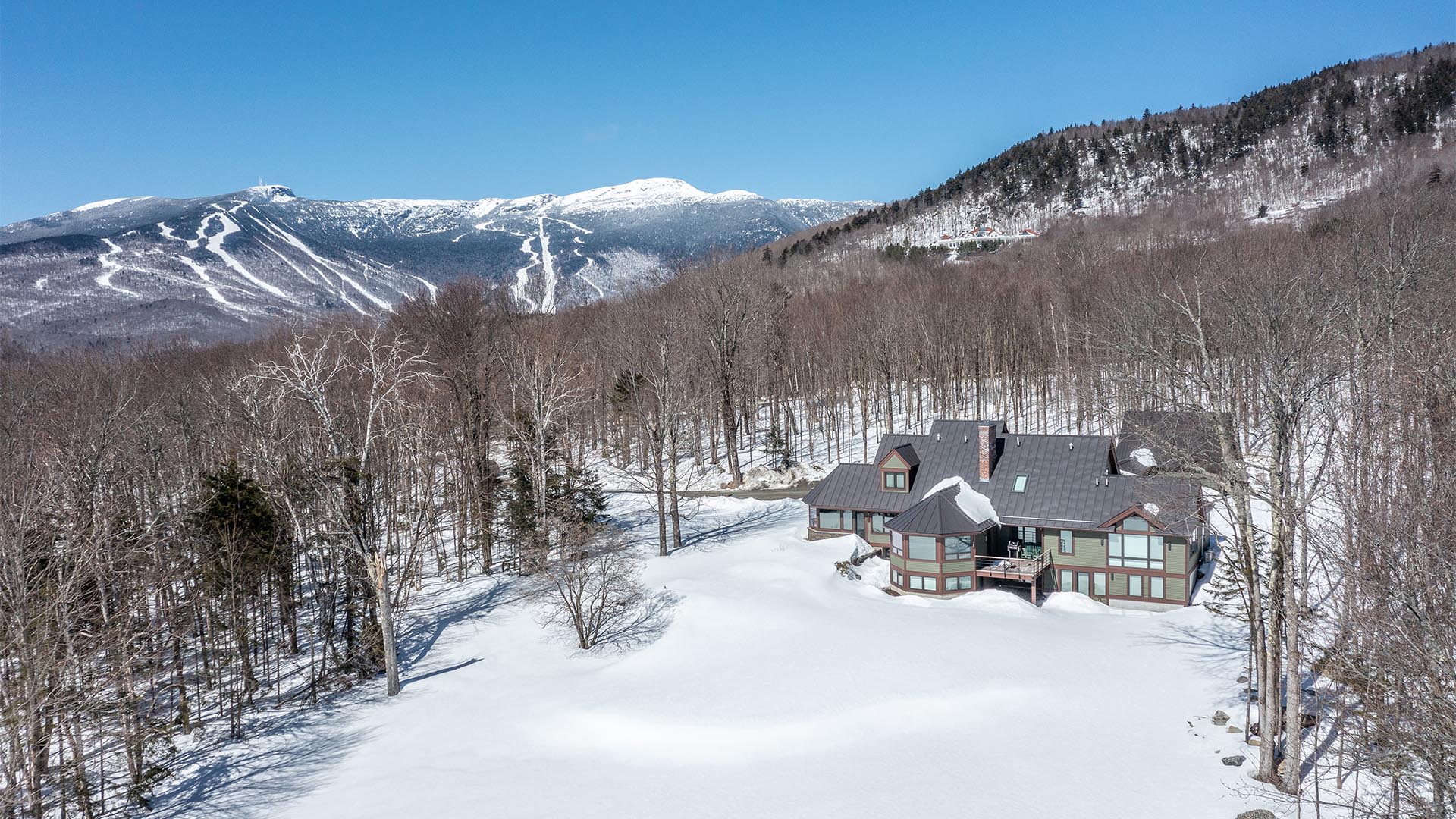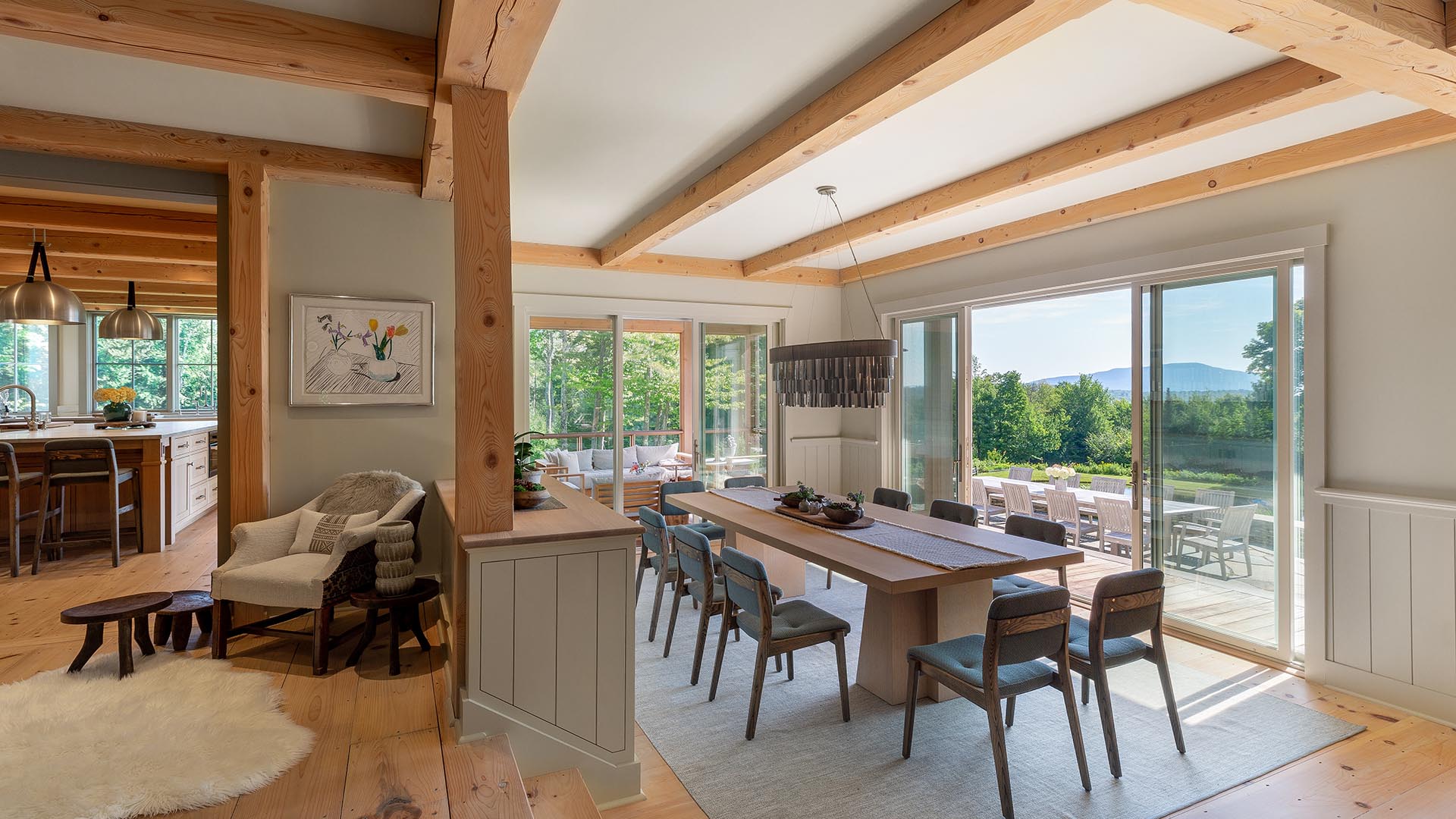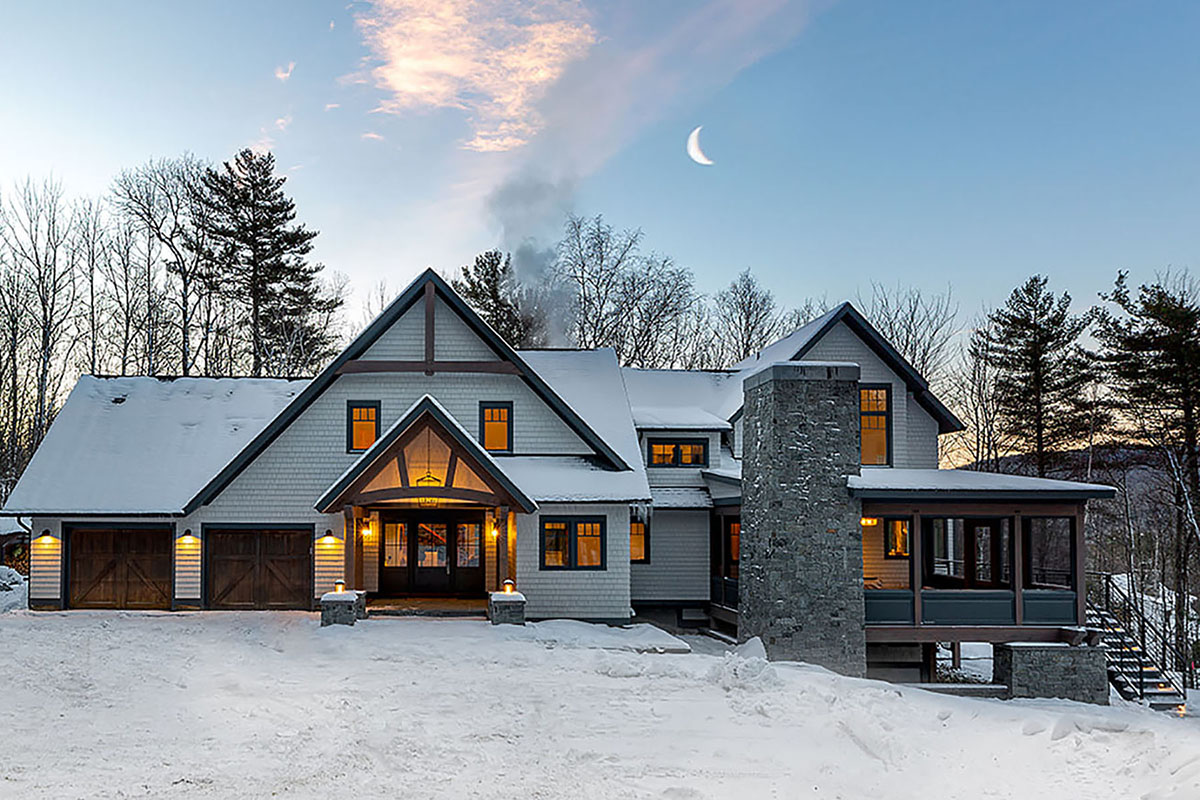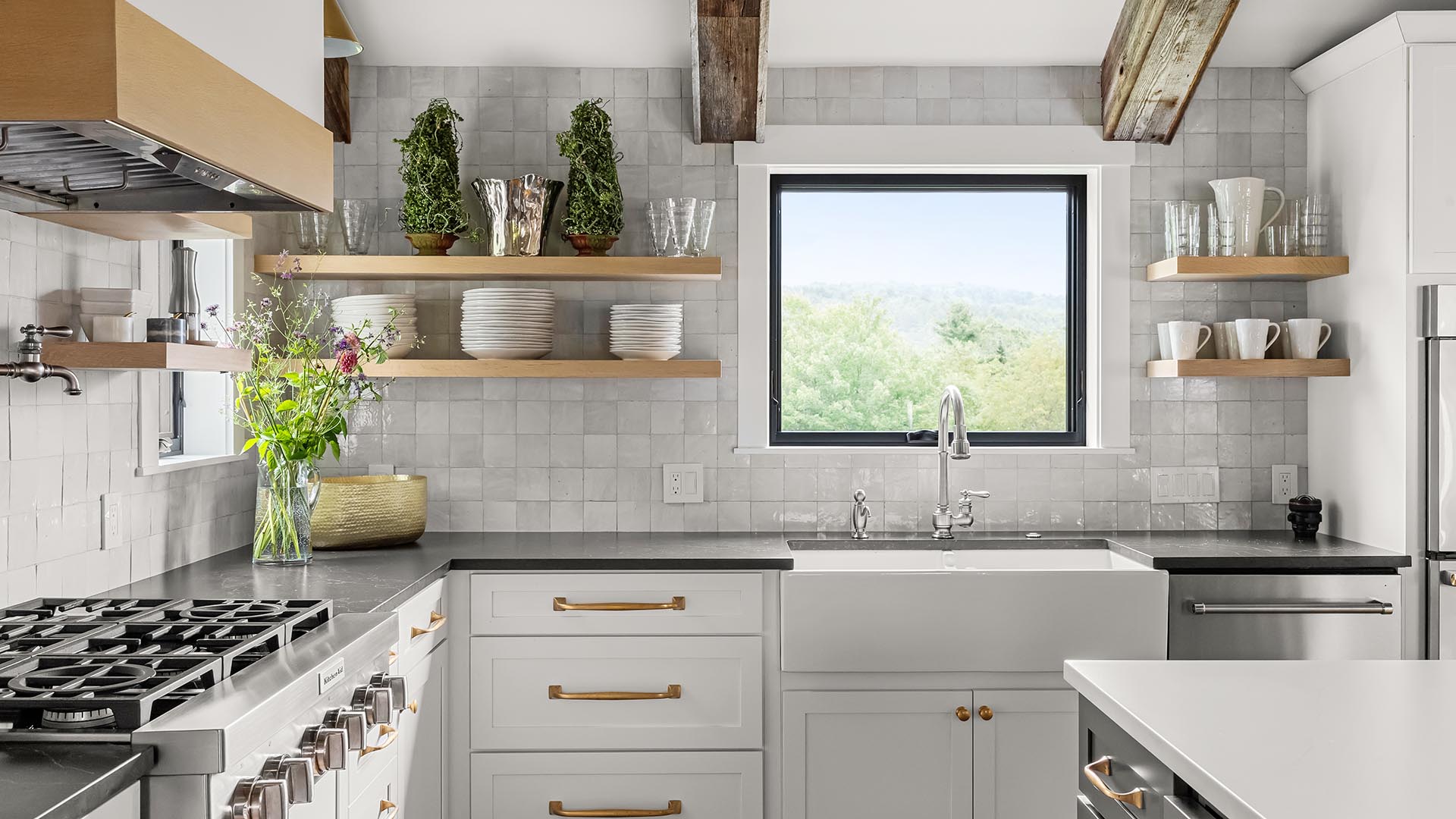For two years, Jennifer and Shawn Donovan of Waterbury Center had been scouring central Vermont for the right house to buy. After years of renting, they never thought finding an affordable house would be so difficult. Little did they know that dilapidated house renovations were in their future.


On a whim, Jen called builder Steve Sisler, owner of Sisler Builders. “Do you have any spec houses, property… anything?” she begged. In fact, Steve had something, but it was, well, not for everyone. “You want to look at a derelict building and see if it might work for you?” he replied. He made sure to note that it had great views of Camel’s Hump. Unfazed by the unusual proposition, Jen agreed to stop by the next day.
The two met in Waterbury Center in front of a dilapidated and forlorn looking old house with ugly green asbestos siding. Steve explained that Sisler Builders would begin the dilapidated house renovations by tearing down the house and building on the existing foundation. He wanted to recycle as much of the building materials as possible and build a green, energy-efficient home. Jen walked around the grungy site, her shoes crunching on broken glass. She was quiet, and told Steve she’d get back to him. Privately, she had fallen in love with the idea of renovating an old home on that site.
Dilapidated house renovations on a budget
Jen showed Shawn the house that weekend. He was skeptical, but intrigued by the ideas that Steve had proposed, and motivated by his wife’s enthusiasm. A few days later, they called Steve to say they were interested – with a catch: could he build their dream three-bedroom, two-bathroom house for $180,000?
“That will be a challenge,” Steve replied, “but we’re willing to accept it.” It would be the leanest construction budget for a house of this size that Sisler Builders had done in years. But Steve and his colleagues, led by site supervisor and carpenter Matt Rouleau, were eager to demonstrate that with creativity and experience, building state-of-the-art energy-efficient homes – their specialty – could be done on a budget and a tight time frame.



Steve, Matt, and their subcontractors came to the Donovans with numerous ideas for how to save money and energy while building something beautiful and practical from the dilapidated old house. By using the existing 20-year-old concrete foundation, deemed sound by a structural engineer, the couple could save $30,000. Steve and Matt proposed using T-111 siding instead of clapboards, for a savings of around $12,000.
Plumbing subcontractor Don Clark pointed out that an acid-etched concrete floor with radiant heat had the dual bonus of being more efficient and $2,000 cheaper than a hardwood floor. Electrician Mike Cannon proposed installing the electrical service in a way that saved significant costs. Noi Jones and Kevin Kinney got to work fabricating the central staircase using exposed old structural beams. A passive solar design featuring lots of glass would bring in light and views, and keep the home warm. Steve would design and draw the house plans himself, and Jen and Shawn offered to do their own painting and buy and install all the appliances and cabinets.
After making one minor change to the design, the couple “absolutely let us run with it,” recounts Steve. Five months after the dilapidated old house renovations began, Jen and Shawn Donovan moved into the beautiful new home that rose in its place.
Dream home completed

Light streams in through the numerous south-facing windows that extend from floor to ceiling. The distinctive profile of Camel’s Hump feels close enough to reach out and stroke. Warmth rises from the heated concrete floor. Weathered barn board from the old house forms an interesting corner, and a staircase in the center of the living room features hand-hewn century-old posts, railings made of peeled logs that were formerly rafters in the old schoolhouse, and stair treads cut from the original massive 8×8 beams. Old melds seamlessly with new.



Steve Sisler says the Donovan house has been especially satisfying for him, his subcontractors and his colleagues at Sisler Builders. “I’m proud that we took a derelict building that was a drag on the community and the tax base and turned it into something viable, valuable, and energy efficient for a young couple. They appreciate what it was, and what we made of it, and now have a real pride of place.” Steve reflects, “It’s rewarding to take something that was broken and make it beautiful.”





